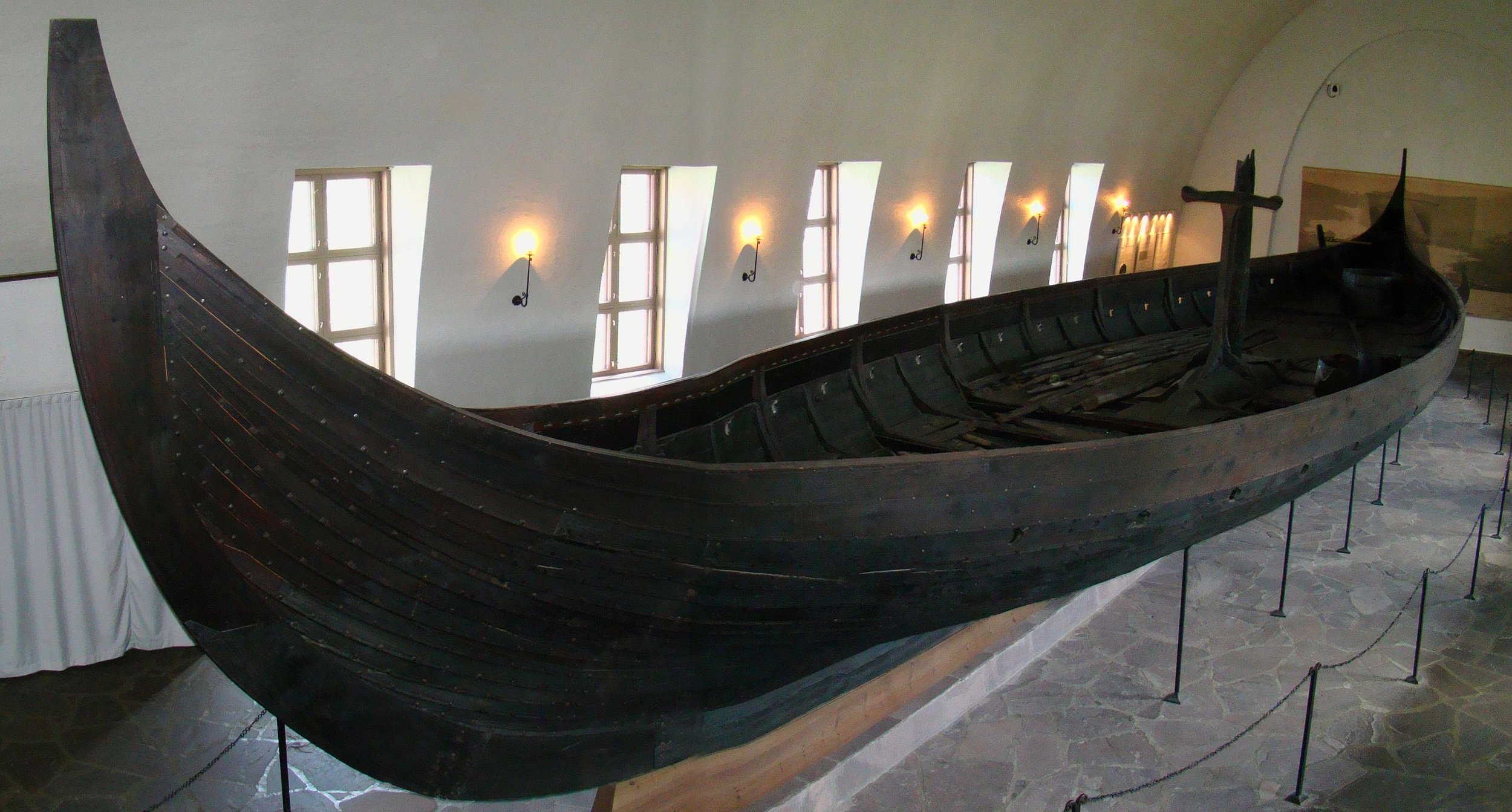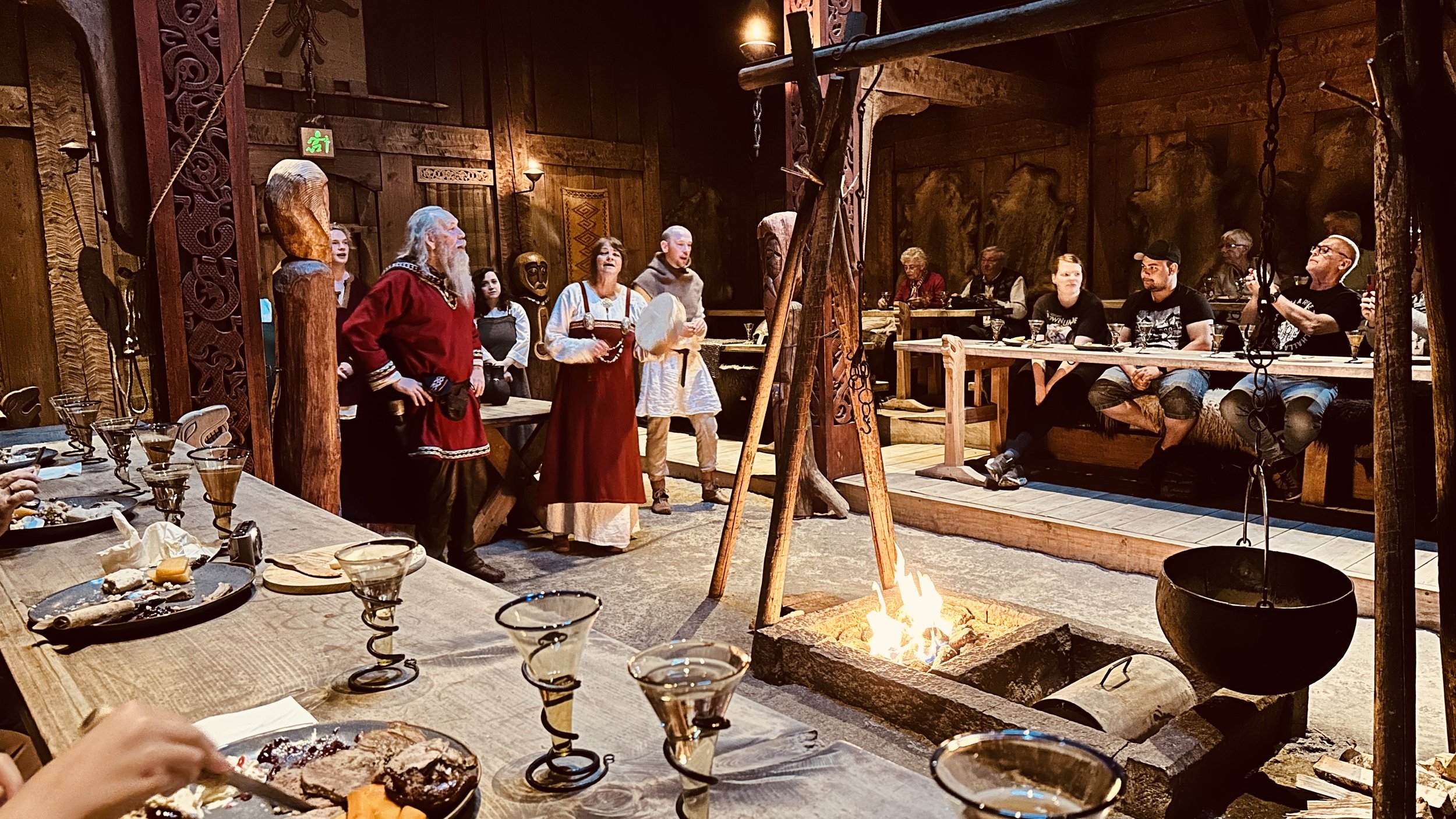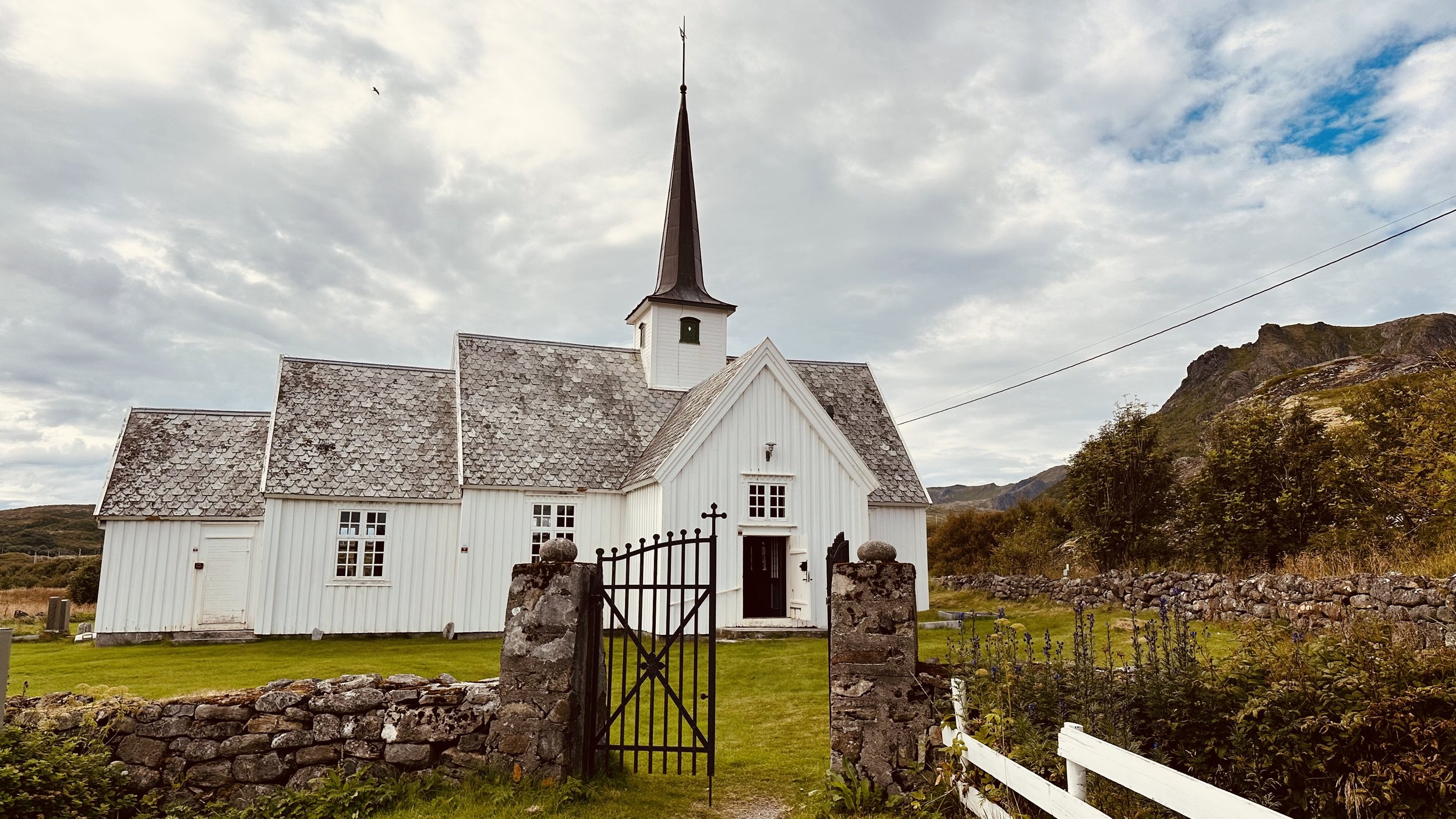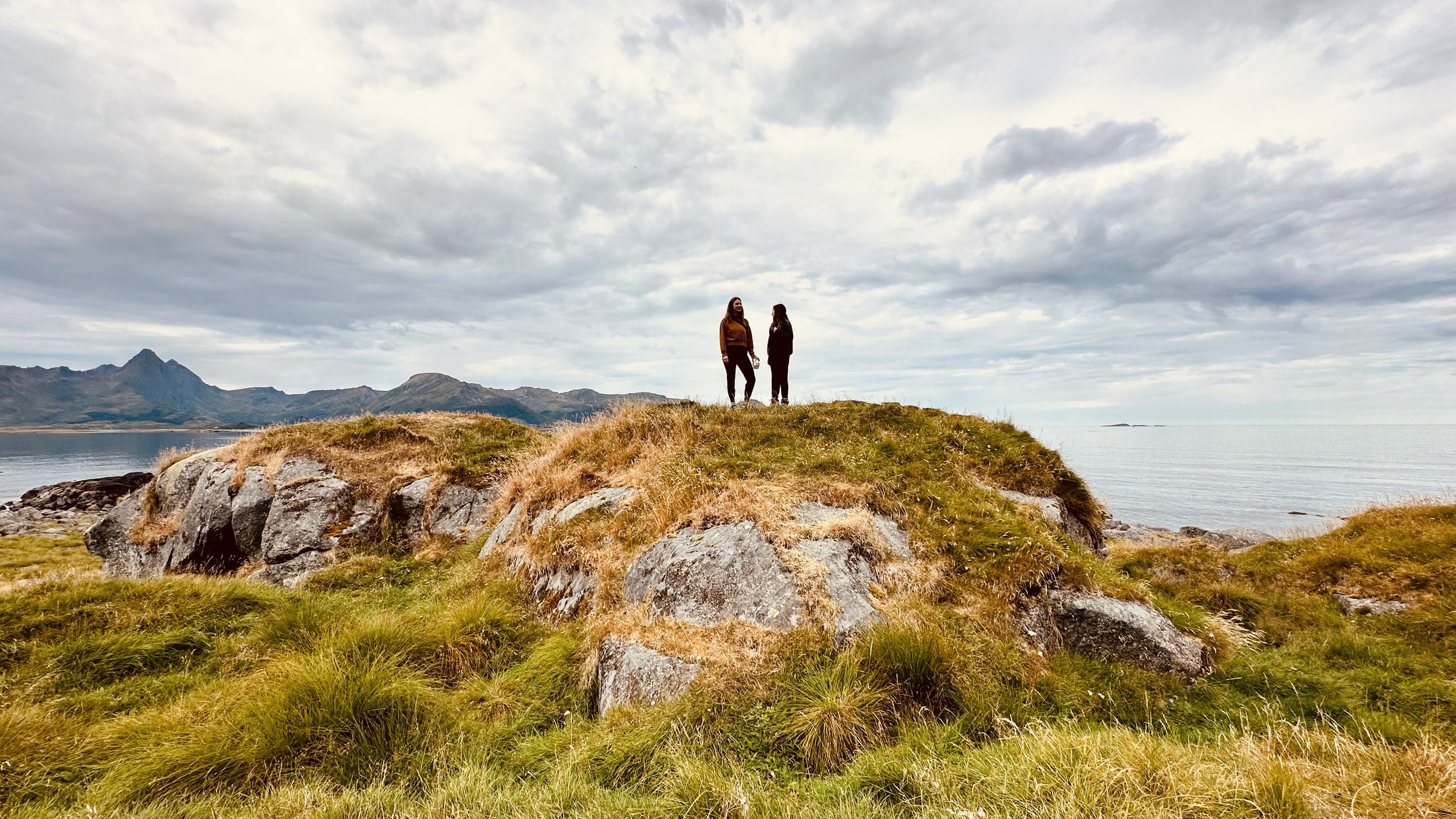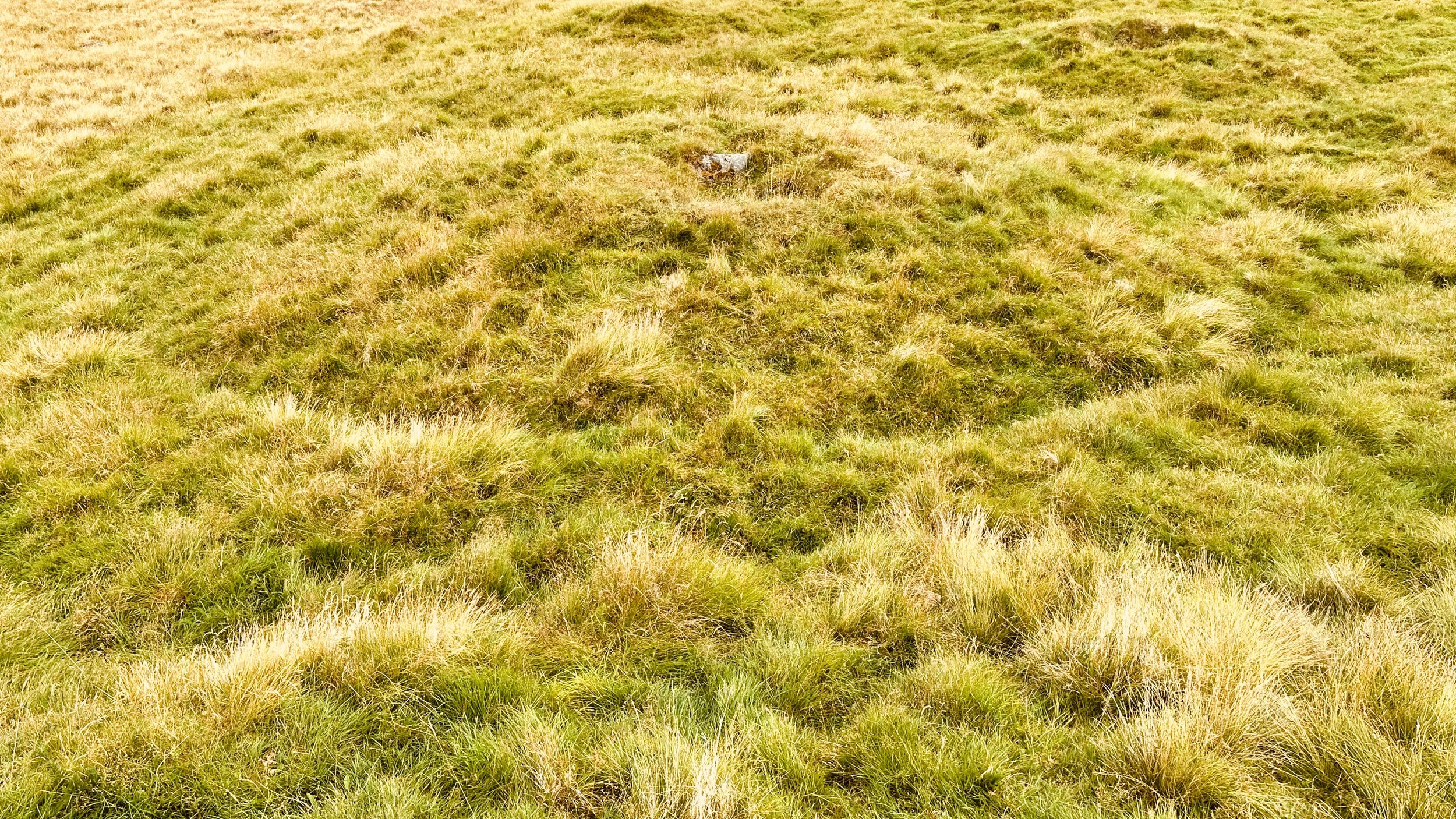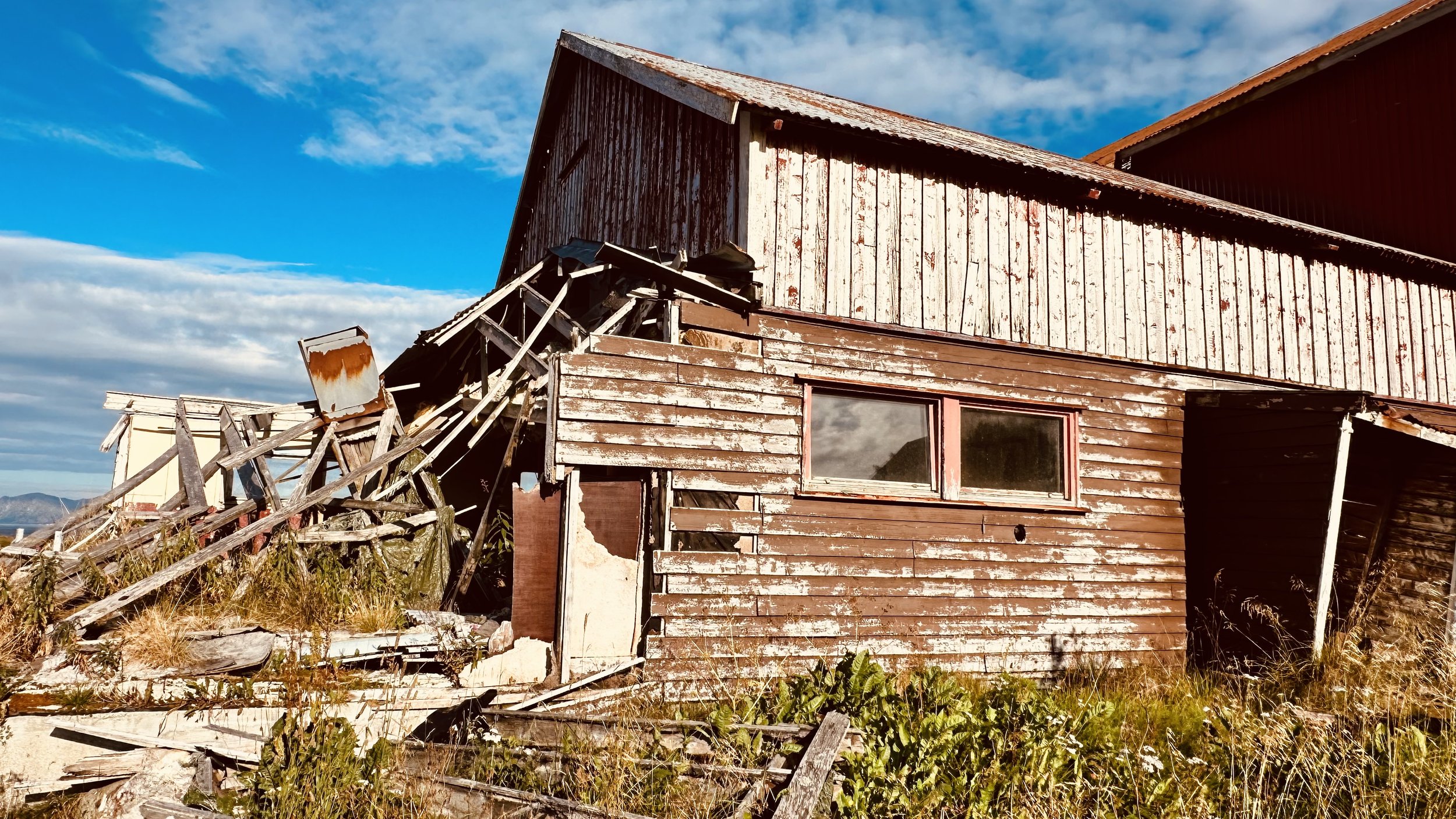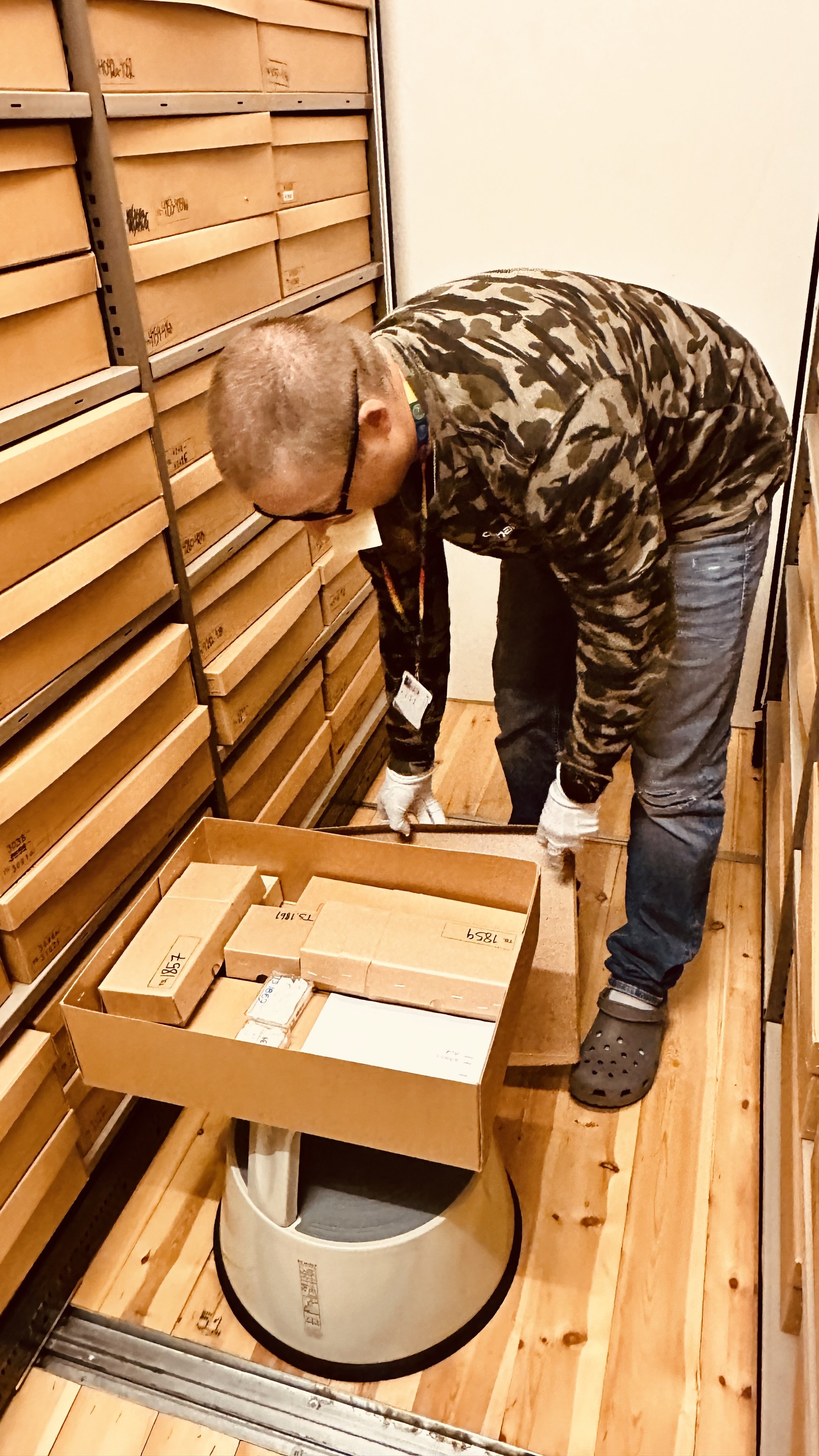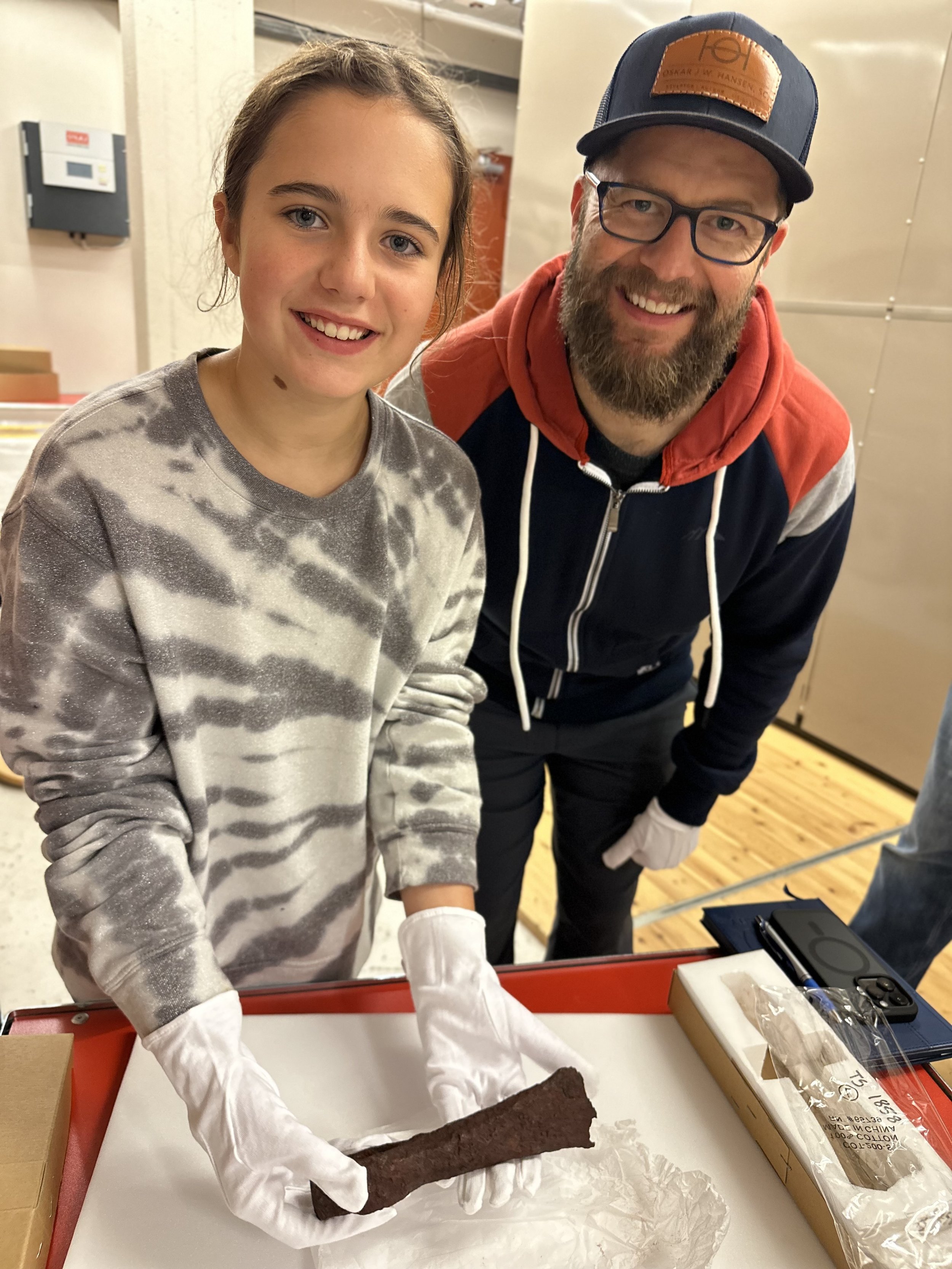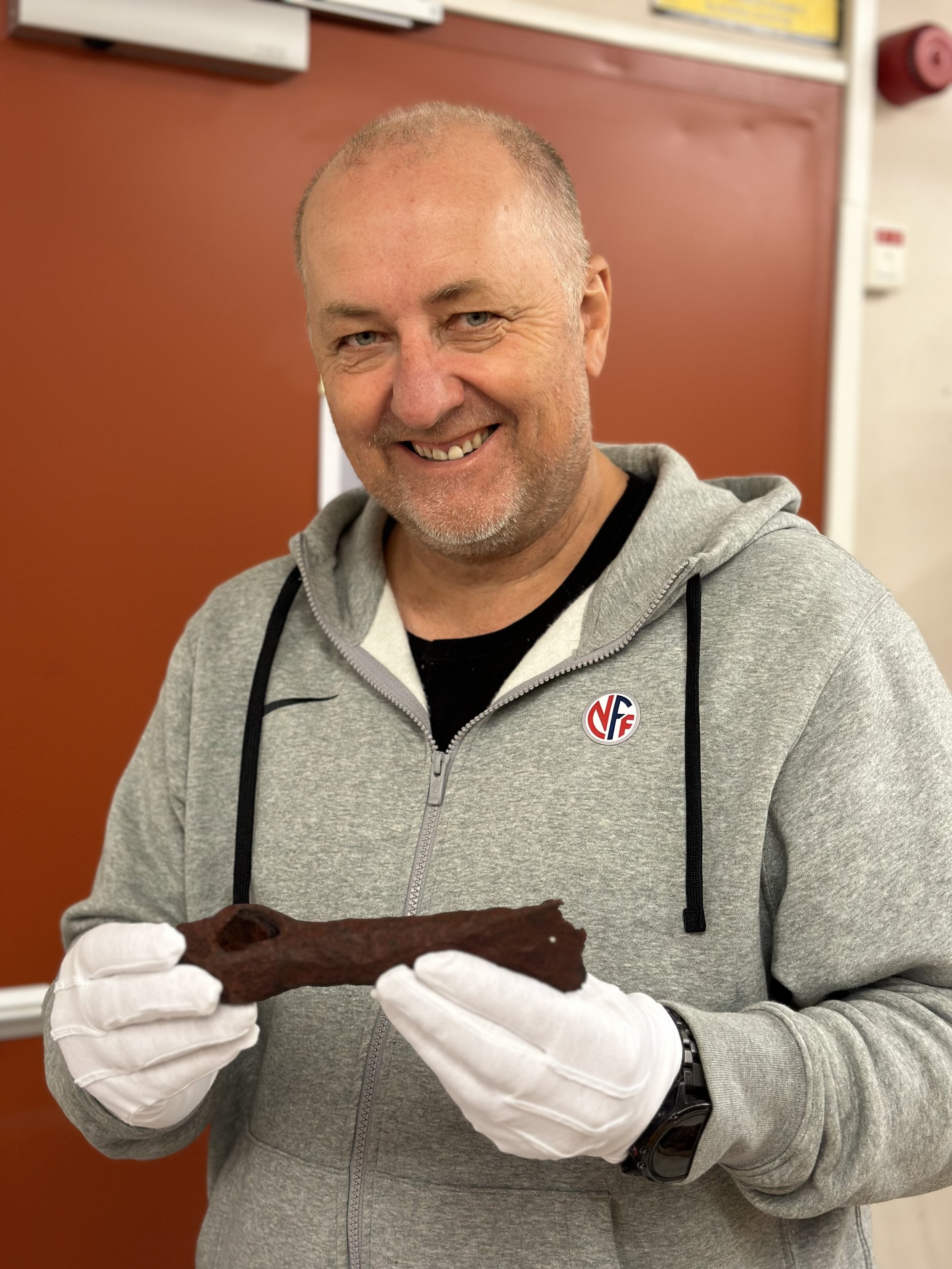My Hunt for Oskar J. W. Hansen’s Ancient Viking Island (Part 2 of 2)
This is the second half of Oskar J. W. Hansen’s ancient Viking Island story.
In the first half, I told the story of Oskar’s childhood adventure, where he discovered buried Viking treasure.
The first time I read Oskar’s account of his Viking Island adventure story, I knew I needed to solve the mystery of whether any of this tale could be true.
In all of Oskar's tellings of the story, he concedes that by adulthood, he had forgotten the island's actual name. By then, he'd taken to calling it "Cormorant Island" because of his memory that the island's shape was reminiscent of a cormorant—a long-necked aquatic bird.
Wikipedia notes that “in North Norway, cormorants are traditionally seen as semi-sacred.”
Photo of a cormorant. (Source: Wikipedia).
Looking for Cormorant Island
Other than looking for an island shaped like a bird, my only other clues for identifying the Viking Island were that I knew from Oskar's description that it was somewhere off the coast of the village of Langenes and Klø Farm, where Oskar lived and that it had a cliff that Oskar climbed to view the array of mounds.
I spent months digging into regional maps, Google Earth and various satellite image sites trying to identify small, uninhabited bird-shaped islands in the ocean off the coast of Oskar's home that had cliffs.
Given that Oskar didn't just say the island was bird-shaped but specifically cormorant-shaped—a bird primarily distinguished from regular birds by the length of its neck—I focused my search on nearby islands that appeared to have a long-necked shape.
Within sailing distance of Oskar's home, there is only one island with a shape that looks like a long-necked Cormorant: Anda Island, just off the coast and prominently visible from Langenes.
Anda Island, just north of Oskar’s village of Langenes and Klø Farm. (Credit: Bing Maps).
Anda Island’s Lighthouse
I then spent months researching everything I could find about Anda Island.
A quick Google search shows a few important facts for my search.
The island, from above, looks a lot like a cormorant. It has a round, wide main body, with a long, thin rock "neck" extending out. The island is very rocky, as Oskar described, and has cliffs. I could see why Oskar described it the way he did.
Another important feature of Anda Island is its home to the region's only lighthouse. The lighthouse has recently been automated, but until modern technology, a caretaker family lived on the island, which means it wasn't uninhabited or unexplored. That felt problematic for my search.
Thankfully, it turns out the original lighthouse was built in 1932—in fact, it was the last new lighthouse constructed in Norway—decades after Oskar's adventure. And before its 1932 construction, Anda had been uninhabited.
The rocky cliffs and lighthouse on Anda Island. (Source: Wikipedia).
The final important thing I found is that the island is now a highly protected bird sanctuary—it's an important nesting area for protected regional birds, including... cormorants. Only scientists with strictly monitored government authorization are allowed to visit. I had no idea how I would convince Norwegian officials how I might investigate whether this had been Oskar's Cormorant Island or whether it was covered in burial mounds.
I contacted several Norwegian cultural heritage officials, and it was pretty clear that unless I were a trained archeologist conducting official archeological research, I wouldn't be able to get a permit for exploration. I then tried to locate archeologists specializing in Viking research, hoping I might convince them both to start a project and let me tag along, but I kept running into dead ends.
Oskar's Norwegian Relatives
Coincidentally, around the same time as my Anda Island research, I connected with Alf Hansen, a Norwegian national soccer official who is the grandson of one of Oskar's half-sisters. Years earlier, Alf and one of Oskar's grandsons had connected online and begun doing joint genealogy work to identify Oskar's Norwegian ancestors. Their work together had fizzled out a long time ago, and Oskar's grandson, Charles, had died in early 2020, so Alf had given up work on the project.
When Alf and I reconnected, Alf quickly dug up his prior research and restarted the investigations he'd begun years before. Alf has been an invaluable resource as a tireless researcher, but also because he's been able to connect the dots of family stories he’d heard from his grandmother in Norway and because of his ability to help me navigate Norwegian-language history and genealogy archives.
As Alf and I coordinated on family history research, I mentioned my interest in tracking down Oskar's Viking Island. Alf suggested I plan a trip to Norway to meet other extended family members, see sites from Oskar's childhood, research at some archives and museums in person, and see if we could solve the Viking Island mystery.
In preparation for my trip, I re-read Oskar's various versions of his Viking Island adventure. I then noticed a tiny fact I had overlooked in previous readings. In one telling of the story, Oskar specifically mentioned that, when he’d been caught with his Viking treasure, he’d been instructed to send the bronze axe head to “Nicolaysen.”
Nicolaysen and Gokstad
Nicolay Nicolaysen (1817–1911) is Norway's most famous archeologist. He helped found many of Norway's archeological organizations and history museums and was the nation's first official government antiquarian.
1897 portrait of Nicolay Nicolaysen.. (Source: Wikipedia).
Among his many achievements, Nicolaysen is most famous for his excavation of the ancient Viking mound at Gokstad that unearthed the "Gokstad Ship," the largest preserved Viking ship in Norway that has been on prominent display in Oslo's Viking Ship Museum for the last 100 years.
Nicolaysen’s Gokstad Ship on display in Oslo’s Viking Ship Museum. (Source: Wikipedia).
Incidentally, a replica of the Gokstad Ship was recreated during Oskar's childhood by Norwegian newspaper magnate Magnus Andersen. Captain Andersen sailed his replica ship "The Viking" from Norway to Chicago in 1893 for the World's Fair Columbian Exposition. His sailing adventure was a public relations spectacle and an experiment demonstrating that Viking Age explorers, such as Leif Erikson, possessed the sailing technology to reach North America centuries before Columbus. Decades after the 1893 Expo, Oskar and Captain Andersen would connect in Chicago, but that's a story for another time.
This is all a bit of a digression, but the point is that during Oskar's childhood in rural Arctic Norway, Nicolay Nicolaysen was famous across Norway for his Viking archeology research and his Gokstad Ship discovery. Nicolaysen would naturally be the name Oskar's family would think of to send Oskar's axe treasure.
At the time of the Viking Island adventure, Nicolaysen was an old man, still actively working and investigating, but at a much slower pace than earlier in his career. His home base at the time was the Tromsø Museum, the only history museum in the Arctic at that time, in the city of Tromsø, a city even further north than Oskar's home and now the northernmost urban area in the world.
Photo of the Tromsø Museum. (Source: SNL.no).
With this knowledge, I asked my Norwegian contact, Alf Hansen, for help to see if the Tromsø Museum had any record of Oskar contacting Nicolaysen.
After some back-and-forth with a researcher at the museum, we had an amazing breakthrough. Buried deep in the museum's archives, without great documentation due to how early it had been added to the collection, was Oskar's axe head and a handwritten letter from Oskar to Nicolaysen that had accompanied it!
Oskar's story was true! He really had discovered Viking treasure as a child.
Oskar’s letter to Nicolaysen accompanied his Viking axe head. (Source: Tromsø Museum).
With Alf's help in translating Oskar's letter, we made two more important discoveries.
The first was that Oskar's Nicolaysen letter was dated 1908 when Oskar was 16 years old, far older than he'd claimed he'd been in his adventure tale.
The second was that even though in Oskar's later tellings of the story he couldn't remember the name of the island, in his letter from 1908, he named the island... and it wasn't Anda Island.
Klø Farm and Store Kvannholmen
Oskar's 1908 letter to Nicolaysen says the island where he found the axe was named Store Kvannholmen. I immediately Googled to see if there was an island near Oskar's home with that name, and there was.
The island of Store Kvannholmen, just east of Klø Farm. (Source: Bing Maps).
But Store Kvannholmen—at least to my eye—looks nothing like a long-necked cormorant. No wonder I hadn't matched it.
More importantly, even from grainy satellite images, it's easy to see that Store Kvannholmen is covered in circular mounds. We'd found Oskar's Viking Island!
Circular mounds visible on images of Store Kvannholmen. (Source: Bing Maps).
Alf and I began to make plans for my visit to Norway.
Alf was already in touch with one of his second cousins, named Asbjørn, whose grandmother was a different half-sister of Oskar (Oskar and his half-siblings all shared the same mother, Josefina, whose ancestry also involved rumors of secret European royal bloodlines). Asbjørn lives near Oskar's childhood home, Klø Farm, on a piece of land that was once part of Klø's farmland. Alf had visited Asbjørn at Klø many years earlier but wasn't familiar with Oskar's Viking Island story then.
Oskar’s birth mother, Josefina c. 1900 (Source: Alf Hansen).
Alf reconnected with Asbjørn to help arrange my visit to Klø. Asbjørn, in turn, reached out to a neighbor, Theodor, from the neighboring village of Strengelvåg, who serves unofficially as the region's historian. We arranged for a group Zoom call to discuss preparations for our trip to see where Oskar grew up and to connect with anyone still around who might know stories connected to Oskar's life there long ago.
On that Zoom call, Alf and I mentioned our interest in Store Kvannholmen. Theodor, the local historian, piped in that he was very familiar with that island—he owns it. So long as the weather cooperated, he said he'd happily take us to see it.
Trip planning took nearly a year, but in August 2023, my wife, my pre-teen daughter, and I flew to Norway for two weeks of Oskar Hansen research. Our trip started with visits to museums and archives in Oslo before flying north to the Lofoten Islands in the Arctic. Lofoten is one of the most beautiful places on the planet and was also home to one of the men who might have been Oskar's biological father. After a few days of enjoying epic scenery and spending a memorable day at the Lofotr Viking Museum, we drove north to Oskar's childhood village.
We enjoyed a Viking feast in the Lofotr Viking Museum’s replica longhouse that sits beside the archeological remnants of the area’s original ancient longhouse. In 2013, episode four of season 23 of The Amazing Race ended with a “pit stop” at an identical dinner in this room. (Credit: Aaron Street).
The next day, we got a tour of the church in Langenes that Oskar attended as a boy. Langenes Church dates to at least the 1500s, but there are local rumors that it might be much older than that and it might even be built on the remnants of the original Longenes Sea-King’s longhouse.
Photo of Langenes Church. (Credit: Aaron Street).
After our church tour, eight of us then gathered at the Klø docks for a trip to Oskar's Viking Island. Our group included my family, Alf, Asbjørn, their cousin Kristian, Theodor, who owns the island, and Theodor's neighbor, who served as our captain, taking us out on his small fishing boat.
Photo of our makeshift water taxi, no bigger than the wooden boat Oskar sailed as a boy. (Credit: Aaron Street).
More than 100 years later, the island still only has one small area for docking, a spot where the rocks are smaller and smoother than elsewhere. Our captain pulled his fishing boat to the same spot Oskar and Ole had moored their tiny sailboat as boys.
Alf with an oar ready to help aid our boat landing. (Credit: Aaron Street).
Getting out of the boat, we all organized ourselves at the island's edge, surrounded by enormous old whale bones washed ashore long ago and now brittle and bleached by years of sunshine and Arctic weather.
My wife and daughter with old whale bones along the shoreline. (Credit: Alf Hansen).
Sitting as a group on the grass, Theodor pulled out a copy of a local history magazine from 2019. In it was an article he had written about Oskar’s Viking Island story and how it took place on his island, Store Kvannholmen. The mystery that took me years to solve from halfway around the world had long been known to locals, many of whom still share stories they heard from their parents and grandparents about Oskar’s childhood adventures in the north.
Even if I hadn’t been the only person to solve Oskar’s mystery, I had solved it. I had arrived.
I first noticed that the island, which wasn't shaped like a long-necked cormorant, also had nothing I would call a cliff. On the far western side of the island, the ground sloped up a bit to serve as the island's highest point, but I wouldn't call it a cliff. Maybe if I were an old man trying to recollect my memories of a story from my childhood, I would remember it as being much bigger than it was, but it felt like a strange description.
My wife Kelly and daughter Mary Lou standing on the island’s “cliff.” (Credit: Aaron Street).
The second thing I noticed was green rocky mounds scattered around the island. There appeared to be 15 or 20, not hundreds as Oskar has remembered, but indisputable mounds nonetheless. Each one appeared to be constructed of piles of boulders now covered in a millennia of moss and grass, making them appear smooth. But one wrong step into a moss-filled crack and it was easy to fall into deep gaps between the boulders.
Group of circular mounds, clearly visible. (Credit: Aaron Street).
Our group enjoyed a couple of hours on the island, hiking around, taking hundreds of photos, and soaking it all in. Without government permission, we could not dig into or explore any of the mounds, but we got to see, touch, and climb around them, experience the magic of the place, and confirm that Oskar had identified an important unexplored Viking archeological site.
Ancient Viking burial mounds on Oskar J. W. Hansen’s Viking Island. (Credit: Aaron Street).
After our time on the island, we re-boarded the fisherman's boat and sailed back to Klø.
Left-to-right are three great-grandsons of Oskar’s mother, Josefina: Alf, Asbjørn, and Kristian (in the foreground). On the right is our wonderful boat captain for the day.
That afternoon, a few of us walked outside the old Klø Farm house, where Oskar grew up. The house is in poor repair, and its current owner is reluctant to invest in maintaining it.
Oskar’s childhood home at Klø Farm. (Credit: Aaron Street).
We then walked down to Klø’s boathouse, where Oskar’s sailboat had been stored all those years ago. The boathouse hasn’t been well cared for in recent years and is barely standing at this point, but it was amazing to think of young Oskar sneaking around in the middle of the night to sail off on the adventure of a lifetime.
The remains of the Klø Farm boathouse, where Oskar’s small sailboat was stored over 100 years ago. (Credit: Aaron Street).
We had an amazing few days with Oskar's Norwegian relatives, Theodor, and other locals interested in my project.
History discussions over coffee and waffles with, from left-to-right, Kristian, Asbjørn, Theodor, and Alf. (Credit: Aaron Street).
Then we packed up our rental car and drove 6 hours north to Tromsø.
The Tromsø Museum
Alf had arranged for us to see Oskar's axe head and his Nicolaysen letter at the Tromsø Museum.
One of the museum's Iron Age archeology experts took us into their basement archives, where they store the ancient artifacts in their collection. The museum's collection is extensive, and the vault includes a full storage room and shelving, just housing their collection of ancient iron weaponry. Far in the back corner of the room was Oskar's Viking Island axe head.
Tromsø Museum curator Dr. Ingar Figenschau locates Oskar’s ancient Iron Age axe head. (Credit: Aaron Street).
We were all allowed to hold it and Oskar's handwritten letter. It was a humbling and inspiring moment. I was holding the long-mythologized ancient Viking axe head Oskar and Ole had unearthed as boys, long forgotten but now rediscovered.
My daughter, Mary Lou, and I holding Oskar’s childhood treasure. (Credit: Kelly Street).
Alf Hansen was a tireless researcher helping make this trip, and this discovery, possible. (Credit: Aaron Street).
Coincidentally, the same museum that’s a six-hour drive from Oskar’s childhood home not only houses his ancient Iron Age axe head but on display in a back room on the second floor is the 400-year-old baptismal font from Langenes Church that Oskar was baptized in as a baby in 1892.
Langenes Church baptismal font, dated 1600, on display in the Tromsø Museum. (Credit: Aaron Street).
Future Archeological Investigation
I discussed with Dr. Figenschau, the museum curator, whether my interpretation was correct that Store Kvannholmen, Oskar's Viking Island, was indeed covered in unexplored Viking burial mounds. Looking at the photos we'd taken on the island, hearing our descriptions of what we'd seen, and knowing that the axe had been recovered there, he said he did not doubt that the island was indeed an unmarked archeological discovery. But he also cautioned that current Viking archeology philosophy is to leave most discoveries of this type as they are. At least for now, despite the potential significance of the site, there won't likely be a formal investigation.
The final resting place of an ancient Sea-King. (Credit: Aaron Street).
Oskar himself foretold this outcome.
At 72 years old, he wrote: "To Cormorant Island, I never returned, that year or in any of the following years. As far as I know now... the Sea-King and His ghostly crews still lie there; their history interred with them—until that last and final battle between good and evil."




